Oak was a major resource in Britain. Look at the picture below, which shows Salisbury Cathedral in Southern England. It is a panoply of stone, a masterpiece of the mason's art. Well almost all of it. Having constructed the tower of stone the church decided to add a spire, a finger pointing Godwards to draw human minds to heaven. But the weight of stone would have been too much for the spire to bear, so they chose a framework of oak to hold the roof tiles together. Moreover, it was not just English oak, but these master craftsmen in wood, who knew the strengths of different kinds of wood, chose a judicious blend of English and Irish oak. Why? Well examination of the tree growth rings reveals that English oak has thicker rings than Irish oak does, simply because the damp Irish climate is less conducive to tree growth than the English climate is, so Irish oak is the lighter of the two kinds, rendering it eminently suitable for a high and heavy structure. English oak for strength;Irish for lightness.The oak beams have been lovingly tended for centuries,kept painted or varnished to prevent decay, just as the stone of the building has also been maintained, quite an expensive task.
"Hearts of oak are our ships,jolly tars are our men,
We always are ready...we fight and we conquer again and again"
So goes the patriotic song celebrating Britian's naval tradition. I am not enamoured by warlike songs, but it is worth mentioning for the oak of which it speaks. Britain's warships were constructed of oak, and Lord Nelson's flagship Victory, now a permanent exhibit at Portsmouth naval base was made from the wood of 6000 oak trees. Upto the advent of metal ships retired naval officers used to roam the country planting acorns to maintain the supply of wood for Britain's vessels. One officer is said to have planted 69200 acorns around the country. The oaken ships are gone, but these loyal gentlemen gave us so many trees and we can be thankful.
I prefer to put wars behind me, so descend with me into the bowels of the Houses of Parliament where all the written copies of every law passed in this England are kept. We have the oak to thank for their preservation, for since law making began in England the laws were enscribed in oak gall ink. An oak gall is a swelling on an oak tree produced by a particular species of wasp, and each gall is unique to a species. There is one type of oak gall, which when crushed makes a virtually indelible ink, and this ink is used in the venerable parchments that record the doings of parliaments.
The oak provided acorns to feed the peasants' pigs,and wood from coppiced or pollarded oak trees provided many wooden tools [see my article on coppicing.] Many of the poor in the Tudor period made a cheap flour out of crushed and blanched acorns that made up for the wheat flour that they could not afford.


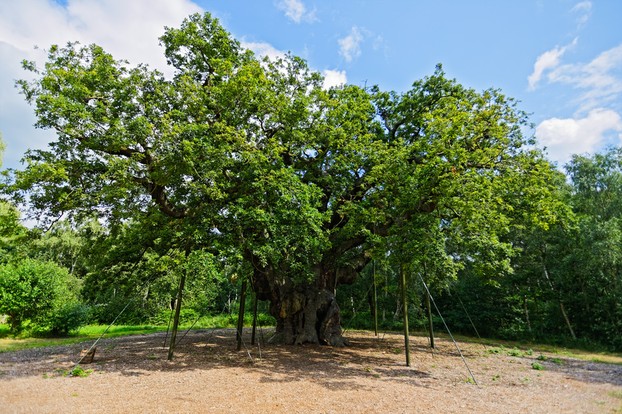

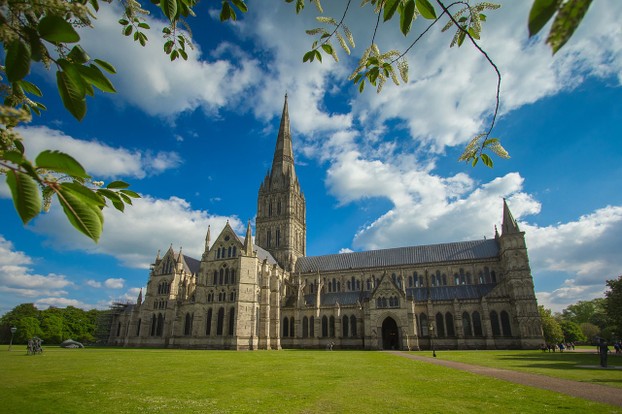



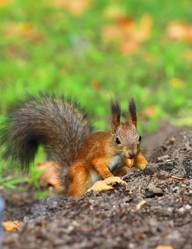

 TheThousand Year Gardenon 11/26/2025
TheThousand Year Gardenon 11/26/2025
 Women of the Gospelson 10/11/2025
Women of the Gospelson 10/11/2025
 Religious Gardenson 08/25/2025
Religious Gardenson 08/25/2025
 Doctor of the Church: John Henry Newmanon 08/03/2025
Doctor of the Church: John Henry Newmanon 08/03/2025

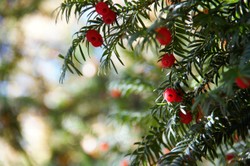
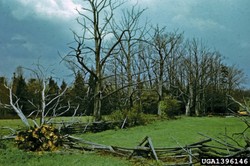
Comments
Generally white, though there is variation. But I rarely eat cucumber sandwiches, so I cannot speak from experience.
Thank you for your comments, especially those Feb. 14, 2024 and Apr 7, 2024, in answer to my previous, previous-day observations and comments.
Bread talk -- ;-D -- about the British Isles always causes me to consider cucumber sandwiches.
What kind of bread dominates among cucumber sandwiches?
They taste like nuts, as far as I know.
Thank you for your comment Feb. 14, 2023, in answer to my previous question Feb. 13, 2023!
Nut-based flour such as acorn flour interests me.
Online sources list such nutty ;-D sources as almond-, cashew-, chestnut-, filbert-, hazelnut-, pecan-, waknut-tree nuts.
Might you be acquainted with how they taste?
Their preparation surely would be similar to acorn flour-making, correct?
Acorn flour is occasionally made by enthusiasts, but it is rare.I do not know the cooking details, but I know that the acorns are well soaked before grinding.
The last sentence in your second subheading, Oak in History, notes that "Many of the poor in the Tudor period made a cheap flour out of crushed and blanched acorns that made up for the wheat flour that they could not afford."
Would there be people today who make that crushed, blanched acorn-flour?
What impact would the above-mentioned flour have had on preparation styles, heating temperatures and times and final-product taste?
The Robhood story is not well-known,and yes, it does make sense.Henry the Third was between John and Edward.
Salisbury Cathedral is so high that only steeplejacks get a close-up view, so you would have to climb the steeple for its wooden character to be obvious. The public are not allowed to ascend that high.
I think that Irish landlords traded in wood with the English, who used the wood for longbows and construction, particularly yew wood. Maigh Eo [ County Mayo] in Connaught, Eire means Plain of the Yew Trees,and it has lost its yews over the centuries. But Ireland has planted trees. There was a plantation of conifer on the hill above my theological college besides Upper Lough Macnean in Eire. But in the nineteenth century there was at least one failed afforestation scheme in Connemara,which failed because of lack of soil nutrients. As for the claim that the English would come and cut down the trees, don't take it seriously. England will never be back in control of Ireland, even though the gang of plutocrats and nationalistic mediocrities headed by a liar who currently misgovern this once great country would love to push Ireland around. Not only would Europe not permit them to do so, they are struggling to keep the countries of the UK together.
You might have rightly concluded that I am an opponent of the government and governing party!
So are all my extended family
frankbeswick, Thank you for the photos, practicalities and products (both books look very interesting for my shopping list).
How well known is your description of the Robhood event of 1225? I've read about Robin Hood's lifetime possibly overlapping with the reigns of Kings John and Edward I, but not of Henry III. It makes sense though, doesn't it?
The panoramic view of Salisbury Cathedral permits no hint, to me, of a wooden spire. Would it be obvious if I were there, in person and up close?
The two English yew in the east, front yard support your esteemed description of the bare ground under yews ... but the Irish yew in the north, side lawn, contrarily but welcomely, tends to have grasses and various stray wild onions and strawberries and various wildflowers!
Someone from Ireland once told me that Ireland is not known for trees because the English cut them all down and that the Irish generally won't encourage re-treeing the Emerald Isle because the English would just come back and cut them down again!
What. a contrast! I was just about to write that snow has stopped falling here, but then I looked out of the window.
On the news last night there were pictures of Saint Peter's Square with two inches of snow, and more falling. we are breaking high temperature records in the mid 80s.